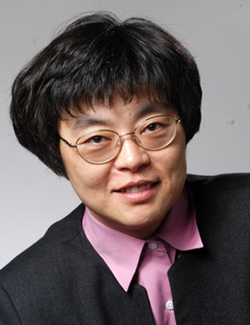Student-focused activities will remain a growth area for OSA—an essential part of its mission as a worldwide voice for, and enabler of, the next generation.
Like many of my predecessors, I became an OSA member as a graduate student. For me, participating in poster sessions opened the doors to my professional network and aided my professional growth. As a student presenter, I met researchers from around the world, with whom I established friendship and collaboration over decades to come.
This experience has anchored my strong commitment to reach out to and support our students, who will become the next generation of global leaders. An important vehicle for that mission is OSA’s more than 400 student chapters, spread across six continents. I have been inspired by how the chapters have continued to thrive and move forward, even amid the pandemic’s challenges.
As with other efforts, student outreach often relies on in-person networking and events, such as the International OSA Network of Students (IONS) and student-chapter visits by traveling lecturers. Last year, COVID-19 abruptly stopped almost all of these in-person activities as travel restrictions were imposed across international borders.
Yet OSA and its student leaders found ways around the pandemic’s roadblocks. I’m proud the OSA Foundation (OSAF) quickly stepped in to provide Zoom accounts to 79 student chapters, resulting in 2,100 chapter-led meetings and events. The OSA Ambassadors, too, moved swiftly to take advantage of online communications and meetings to support and mentor student populations.
Even more inspiring was the partnership of scientists and students to take direct action on COVID-19. Last year, 2009 OSA President Thomas Baer led an effort to design low-cost UV-C chambers for decontaminating personal protective equipment such as N95 respirators—and to leverage OSA’s global network of student chapters to help deploy the technology in resource-challenged settings worldwide. With funding from Baer and others, 17 chapters from 8 countries facilitated construction and delivery of the chambers, affecting countries ranging from Bangladesh to Ghana to Mexico.
Nurturing students in optics and photonics worldwide also means extending opportunities for professional learning and development—through efforts such as OSAF’s Innovation School, a five-day virtual event taking place in April; the Siegman International School on Lasers, scheduled to be held in July in Poland; and the Subsea Optical Fiber Communications School, slated for South Africa in August.
These activities will remain a growth area for the society. They strike me as an essential part of its mission as a worldwide voice for, and enabler of, the next generation.
—Constance Chang-Hasnain,
OSA President

